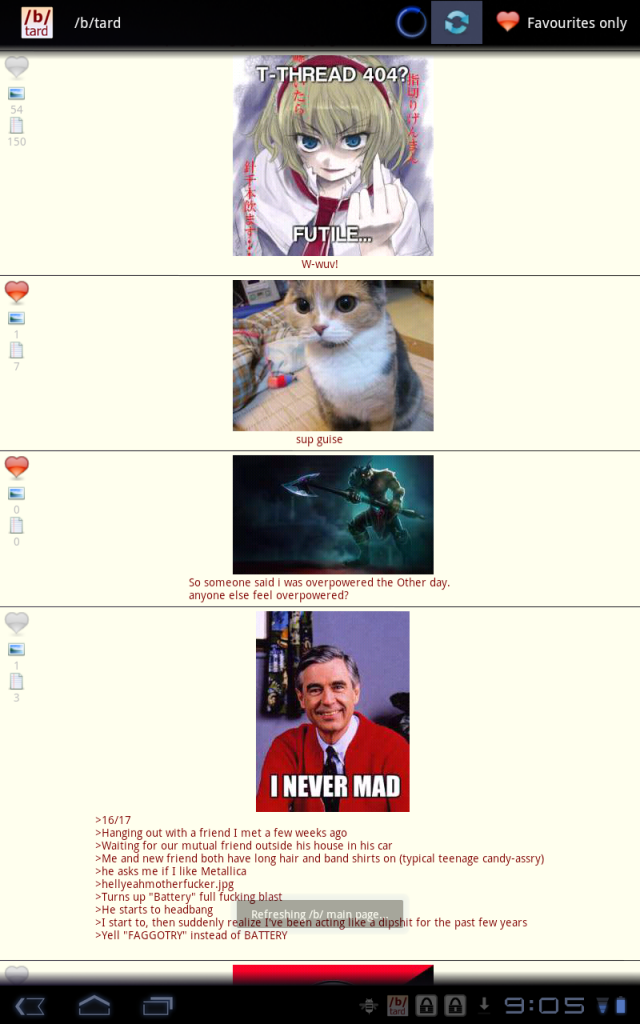/b/ tard 1.3 Release
As a direct result of the Android Developer Lab I attended, I’ve implemented a few quick updates.
Improved UI features on newer devices
<uses-sdk android:targetSdkVersion="12"/>
This allows the device to use the latest interface elements as opposed to be stuck on your min sdk version elements. Most prominent are the differences when you view the app on a tablet.
Also, menu items are moved to the action bar at the top as per honeycomb standards. For each option element in the XML it was simply;
<item android:showAsAction="ifRoom|withText" />
I did notice that the calculation to “ifRoom” is only done once, and if a reorientation occurs, it will not change the number of elements visible.
Eclipse and compatibility with targetSDK
If you start making use of XML features of your targetSDk above your minsdk, then Eclipse will not allow you to proceed unless you build your app with the JAR for the targetSDK. But rest assured that it will still be compatible with older devices of the minSDK unless you use code features that are not backwards compatible.
Unfortunatly, the easiest way to tell if you are using a new or old feature is to always build against the minSDK…
I don’t know how you are going to manage the chopping and changing, or risk not being aware of using sdk features that are not compatible with your minsdk version.
IntelliJ doesn’t seem to throw these kinds of problems but I could be wrong.
Hardware Acceleration
Allows for GPU accelerated graphics. To do this is just a line in the manifest as long as you have at least a gingerbread target sdk.
<application android:hardwareAccelerated="true">



